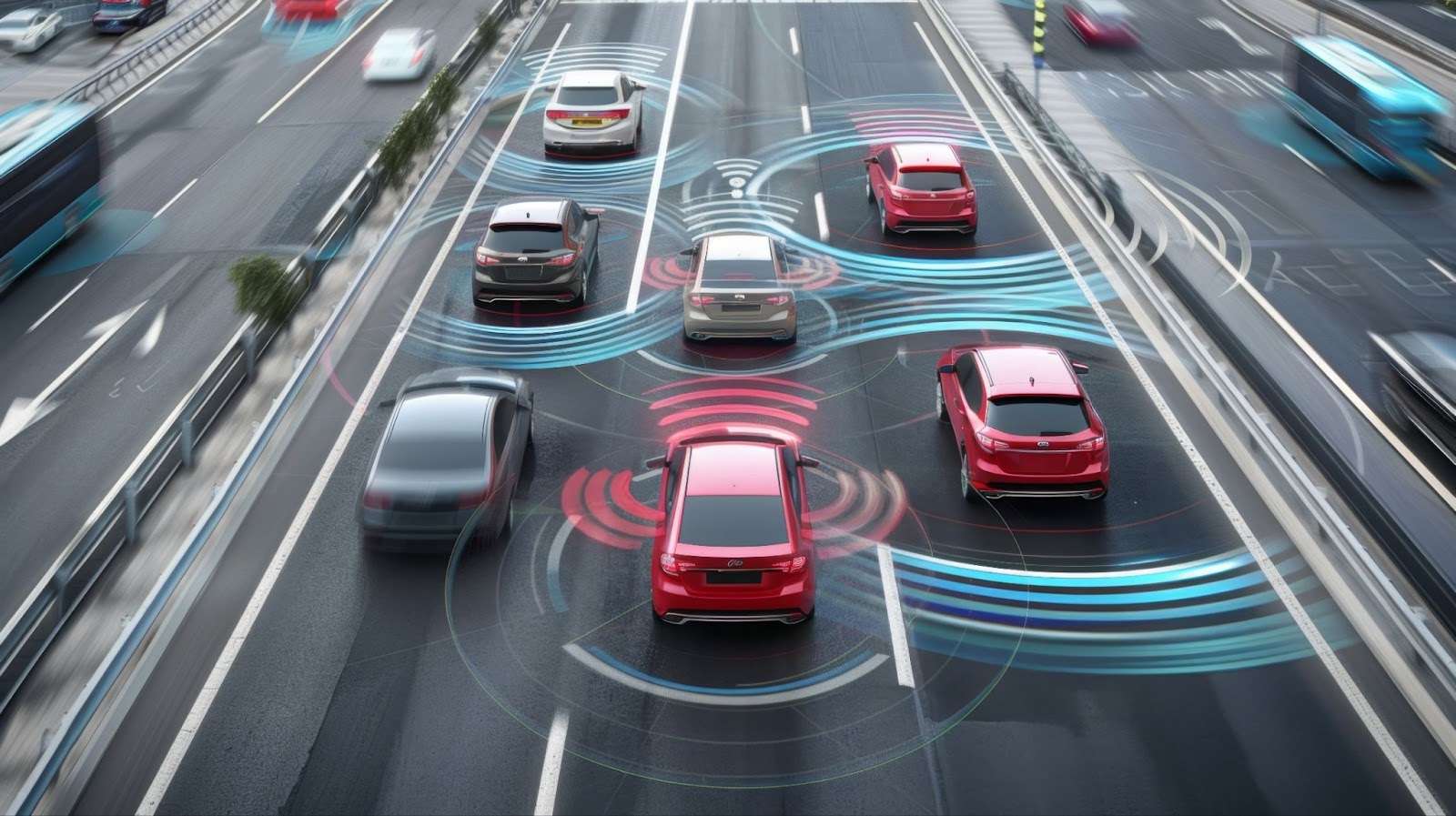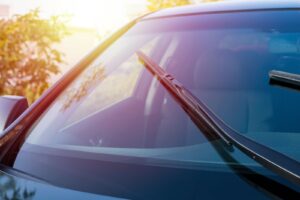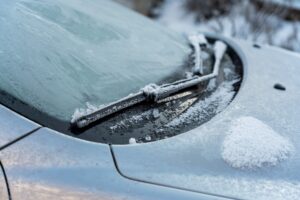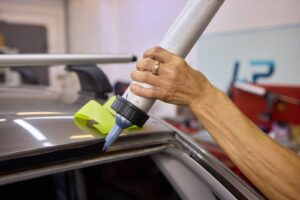Advanced Driver Assistance Systems (ADAS) technology is revolutionizing the way we drive, making our vehicles smarter and safer. As a car owner in Sandy, Utah, or surrounding cities like Draper, West Jordan, and Murray, it’s essential to understand how ADAS technology works, its benefits, and why regular maintenance by an ADAS technician is crucial. This guide will provide a comprehensive overview of ADAS technology, its components, and its impact on driving safety.
What is ADAS technology?
ADAS, or Advanced Driver Assistance Systems, refers to a suite of electronic technologies that assist drivers in driving and parking functions. By utilizing a variety of sensors, cameras, and radar, ADAS technology can detect obstacles, recognize traffic signs, and provide real-time data to enhance driving safety and efficiency. The ultimate goal of ADAS is to reduce human error, which is responsible for a significant percentage of road accidents.
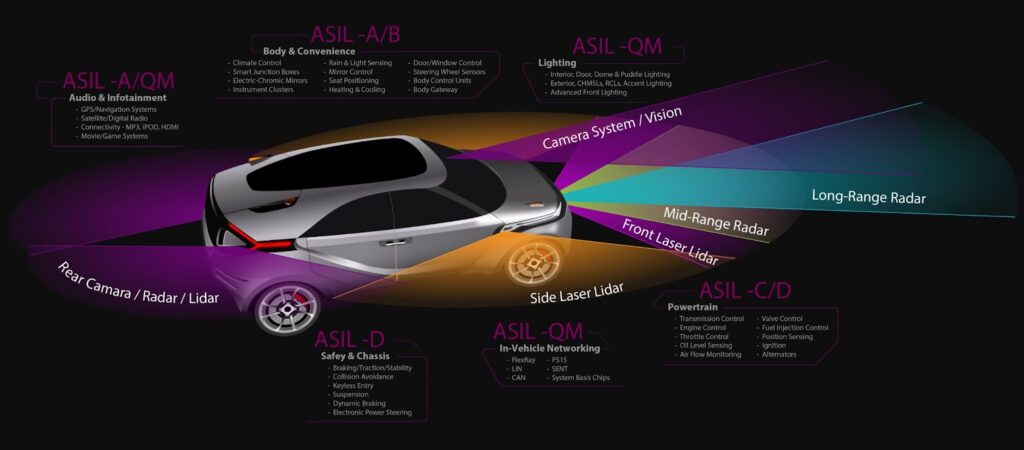
Key components of ADAS technology
ADAS technology encompasses several features designed to aid the driver. While some of the components of ADAS technology (like anti-lock braking) have been around for decades, many of the elements are much newer. Here is a look at some of the most common components found in ADAS cars:
Adaptive cruise control (ACC)
Cruise control is common in most vehicles and maintains a set speed for the vehicle. But adaptive cruise control goes one step further and can automatically adjust this speed to keep a safe distance from the vehicle ahead. It uses radar and cameras to monitor the traffic and adapt accordingly. If you are driving 68 mph, for example, but come up behind a vehicle that is only driving 65 mph, ACC will automatically reduce your car’s speed to maintain a safe distance behind the car in front of you.
Lane departure warning (LDW) and lane keeping assist (LKA)
The lane departure warning alerts the driver if the vehicle begins to drift out of its lane without signaling. This is a significant help when it comes to drowsy or distracted drivers on freeways and highways. Lane-keeping assist is slightly different and goes a step further by automatically steering the vehicle back into its lane if the driver does not take action.
Automatic emergency braking (AEB)
AEB systems detect imminent collisions and automatically apply the brakes if the driver fails to respond in time. This feature can significantly reduce the severity of accidents or even prevent them entirely. Automatic emergency braking often has a faster response time than a human, which can drastically improve the safety of Utah roadways.
Blind spot detection (BSD)
BSD systems monitor the areas alongside and behind the vehicle that are not visible to the driver. If another vehicle or any other hazard is in the blind spot or behind the vehicle when backing, the system will alert the driver, often with visual or auditory signals.
Traffic sign recognition (TSR)
TSR uses cameras to detect and interpret road signs such as speed limits and stop signs, and displays this information to the driver, ensuring compliance with road regulations. This helps drivers remain aware of current speed limits, even if a sign hasn’t been visible for a few miles.
Parking assistance
This includes features such as rear-view cameras, sensors, and automated parking systems that help the driver park the vehicle safely and efficiently. Some parking assistance systems can even parallel park vehicles on busy city streets.
The importance of ADAS technicians
Given the complexity of ADAS technology, maintaining these systems requires specialized knowledge and skills. ADAS technicians are specially trained to calibrate, repair, and maintain these advanced systems. Regular maintenance by an ADAS technician ensures that all components function correctly, providing optimal safety and performance.
How ADAS technology enhances safety
ADAS technology significantly improves driving safety by addressing common causes of accidents. Here are some ways ADAS cars contribute to safer driving:
Reduction in human error
Most accidents are caused by human error, such as distraction, fatigue, or misjudgment. ADAS technology assists drivers in making better decisions and reacting faster to potential hazards. This significantly reduces the risk and the severity of accidents on Utah’s roads.
Enhanced awareness
With features like blind spot detection and lane departure warning, drivers are more aware of their surroundings and potential dangers, reducing the likelihood of collisions. Aware drivers are safer drivers, and ADAS is an excellent tool for increasing awareness.
Proactive safety measures
Systems like automatic emergency braking and adaptive cruise control take proactive measures to prevent accidents, often before the driver is even aware of the danger. This enhances safety and reduces the risk of accidents.
ADAS technology in Utah
In the cities surrounding Salt Lake City, such as Bountiful, Draper, and Ogden, the adoption of ADAS technology is on the rise. These areas experience a mix of urban and suburban driving conditions, making ADAS particularly beneficial. The technology not only enhances safety but also makes driving more comfortable and less stressful, especially in heavy traffic or challenging weather conditions.
Maintaining ADAS systems
Regular maintenance and calibration by a trained ADAS technician are essential for ADAS technology to remain effective. Here are some tips for maintaining ADAS systems in your vehicle:
Regular inspections
Regular inspections by an ADAS technician can identify potential issues before they become significant problems. This includes checking sensors, cameras, and other components for damage, normal wear and tear, or misalignment.
Calibration after windshield replacement
If your vehicle’s windshield is replaced, it’s crucial to have the ADAS systems recalibrated. Windshield-mounted cameras and sensors need precise alignment to function correctly. A professional ADAS technician should perform this calibration during or after the windshield replacement.
Software updates
ADAS technology relies on software to interpret data and control systems. Keeping this software up to date ensures that your ADAS systems benefit from the latest improvements and features.
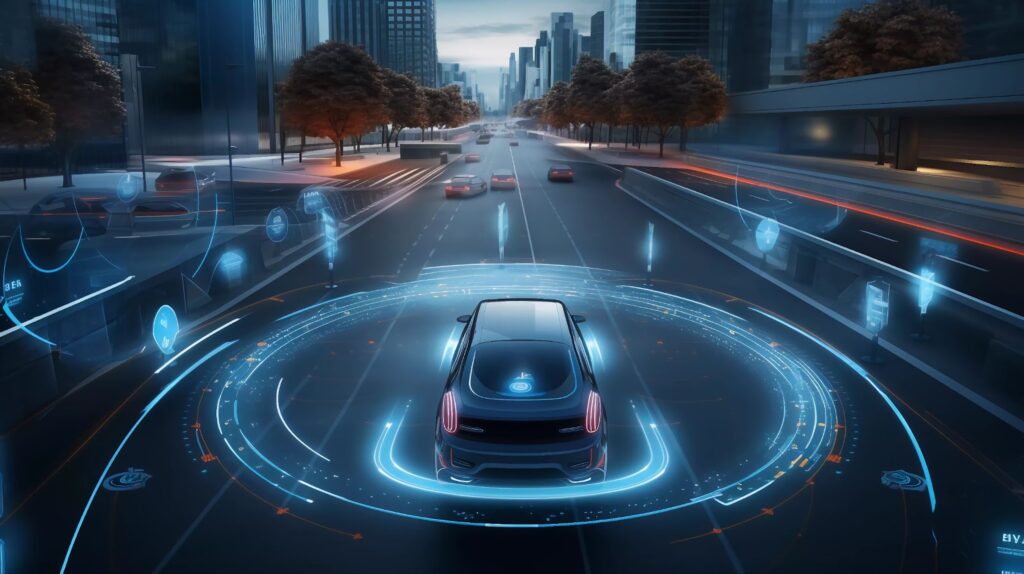
Additional considerations for ADAS maintenance
While regular inspections and calibrations are essential, there are additional considerations for maintaining ADAS technology in optimal condition. These include:
Environmental factors
Extreme weather conditions, such as heavy snowfall or intense heat, can affect the performance of ADAS sensors and cameras. In Utah, where winters can be harsh and summers hot, it’s important to be aware of how these conditions might impact your vehicle’s ADAS technology. Regular cleaning and maintenance can help mitigate these effects.
Driving habits
Your driving habits can also influence the performance and longevity of ADAS components. For example, frequent off-road driving or driving on poorly maintained roads can expose sensors and cameras to excessive dirt and vibrations, potentially leading to misalignment or damage. Being mindful of your driving environment and habits can help preserve the integrity of your ADAS systems.
Manufacturer recommendations
Each vehicle manufacturer may have specific recommendations for maintaining ADAS technology. These guidelines can include recommended service intervals, calibration procedures, and software update schedules. Adhering to these manufacturer recommendations can ensure that your ADAS systems remain in top condition and provide maximum safety benefits.
ADAS technology and windshield repair
Windshield damage is a common issue for drivers in Utah due to road debris, weather conditions, rapid temperature changes, and other factors. Since many ADAS components are integrated into or rely on the windshield (e.g., cameras and sensors), windshield repair and replacement can directly impact the functionality of ADAS systems.
When to seek professional help
If your windshield is damaged, it’s important to seek professional repair or replacement services. Here’s why:
- Calibration is Key: After windshield replacement, the ADAS cameras and sensors need to be recalibrated to ensure accurate performance. Only a trained ADAS technician can perform this calibration correctly.
- Avoid DIY Fixes: Do-it-yourself windshield repairs may save money initially, but they can be time-consuming and more importantly, can compromise the functionality of ADAS systems. This can lead to greater risks and costs down the line. That’s why it’s recommended to have windshield repairs done by a certified technician.
- Proper Installation: Windshield installation is highly technical, and can cause serious problems when not done properly. Always have your windshield installed by a trained technician to avoid windshield cracks and other unsafe driving hazards.
ADAS technology: A glimpse into the future
As technology continues to evolve, the capabilities of ADAS will expand even further. Future advancements may include more sophisticated autonomous driving features, enhanced connectivity between vehicles, and improved integration with smart city infrastructure. Staying informed about these developments can help you make informed decisions about your vehicle and its maintenance.
Autonomous driving
While fully autonomous vehicles are not yet mainstream, ADAS technology is paving the way for their development. Features such as adaptive cruise control, lane-keeping assist, and automatic emergency braking are foundational elements of autonomous driving systems. As these technologies continue to advance, we can expect to see more semi-autonomous and eventually fully autonomous vehicles on the roads.
Vehicle-to-everything (V2X) communication
V2X communication involves the exchange of information between vehicles and various elements of the transportation system, such as traffic lights, road signs, and other vehicles. This technology can enhance the effectiveness of ADAS by providing real-time data about road conditions, traffic patterns, and potential hazards. V2X communication is expected to play a significant role in the future of transportation safety.
Enhanced sensor technology
The sensors used in ADAS technology are becoming more advanced, with improved accuracy and reliability. Innovations in radar, lidar, and camera technology are enabling better detection of obstacles, pedestrians, and other vehicles. These enhancements will contribute to more effective ADAS systems and safer driving experiences.
Trust Utah Mobile Auto Glass for ADAS Maintenance
Understanding and maintaining ADAS technology is essential for safe driving in Sandy, Utah, and surrounding areas like Draper, Bountiful, and Murray. When it comes to windshield repair and replacement, it’s crucial to choose a service provider that understands the intricacies of ADAS systems.
Utah Mobile Auto Glass offers expert windshield repair and replacement services, ensuring that all ADAS components are correctly calibrated and functioning. Their team of skilled ADAS technicians is dedicated to providing top-notch service, helping you maintain the safety and performance of your ADAS cars.
For reliable windshield repair and replacement in Utah, trust Utah Mobile Auto Glass. We are located in Sandy, Utah, and offer free mobile service on windshield repair and replacement within 25 miles of our office. Contact Utah Mobile Auto Glass today to schedule an appointment and ensure your vehicle’s ADAS systems are in optimal condition.
toto slot

